If you’ve ever wondered which animals have bites so powerful and venomous that they’d make you rethink your vacation plans, you’ve come to the right place. In the wild, certain creatures have evolved to possess bites that are equal parts fascinating and terrifying. Whether it’s jaw strength, toxic venom, or pure aggression, these animals have mastered the art of the bite.
1. Saltwater Crocodile
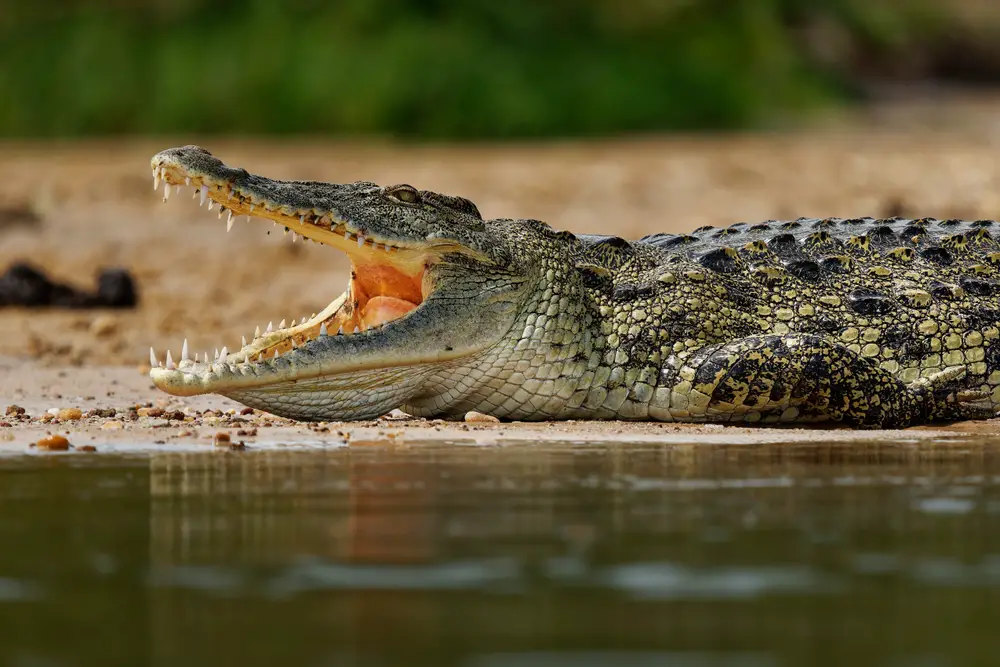
Ah, the saltwater crocodile, nature’s ancient, armored enforcer of the waterways. With a bite force of around 3,700 pounds per square inch, this fearsome reptile doesn’t mess around when it comes to chomping down on prey. Found in regions stretching from India to northern Australia, these crocodiles aren’t picky eaters—anything that ventures too close to their aquatic homes might find itself on the menu. Unlike your friendly neighborhood alligator, saltwater crocs are aggressive and territorial, making them animals you definitely don’t want to cross paths with. Imagine swimming in a sunny Australian river, blissfully unaware of the lurking dinosaur-era predator waiting below. According to National Geographic, saltwater crocodiles possess the strongest bite force of any animal, measured at 3,700 pounds per square inch.
If you’re still not convinced of their deadliness, consider their hunting strategy. Saltwater crocodiles employ the technique known as the “death roll,” where they grasp their prey in those vise-like jaws and spin rapidly to disorient and dismember it. While fascinating to watch on a nature documentary, it’s certainly not something you’d want to experience firsthand. They’re stealthy hunters, often invisible just beneath the water’s surface, patiently waiting for the perfect moment to strike. So, if you’re ever gallivanting around the mangroves and estuaries they call home, keep your distance and maybe opt for a nice hotel pool instead.
2. Black Mamba
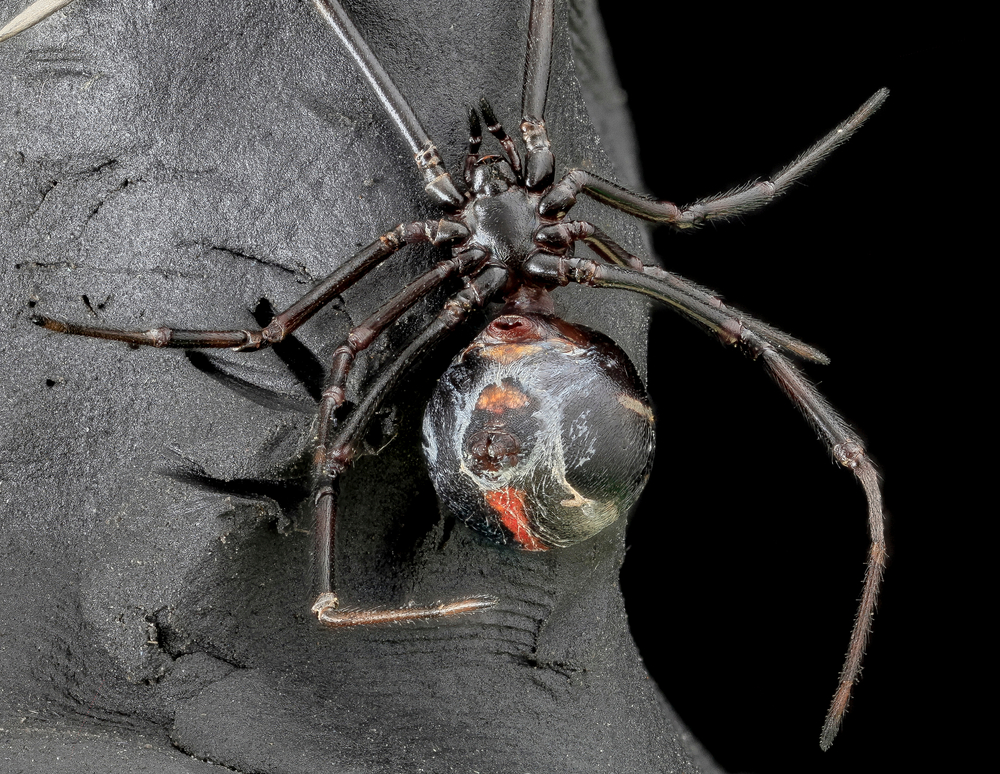
Meet the black mamba, the sleek and speedy snake that’s as deadly as it is misunderstood. With a venomous bite capable of delivering toxins that shut down the nervous system, this serpent means business. Native to parts of sub-Saharan Africa, the black mamba is often considered the stuff of legends—and for good reason. While its name suggests a dark coloration, this snake is more of an olive or gray color, with the “black” referring to the inky interior of its mouth. Encountering a black mamba in the wild is not on anyone’s bucket list, but it’s often the snake that would much rather slither away than engage.
When threatened, however, it can strike with lightning speed and precision, unleashing a neurotoxic venom that can result in a fatality within hours if untreated. This snake can raise a third of its body off the ground, giving it the ability to deliver bites at chest height. Coupled with its incredible speed, reaching up to 12 miles per hour, it’s an encounter best avoided. Thankfully, antivenoms exist, but they’re not always readily available in remote areas, making the black mamba’s bite a potential death sentence. If you find yourself in mamba territory, respect their space and let them keep their bite to themselves.
3. Box Jellyfish
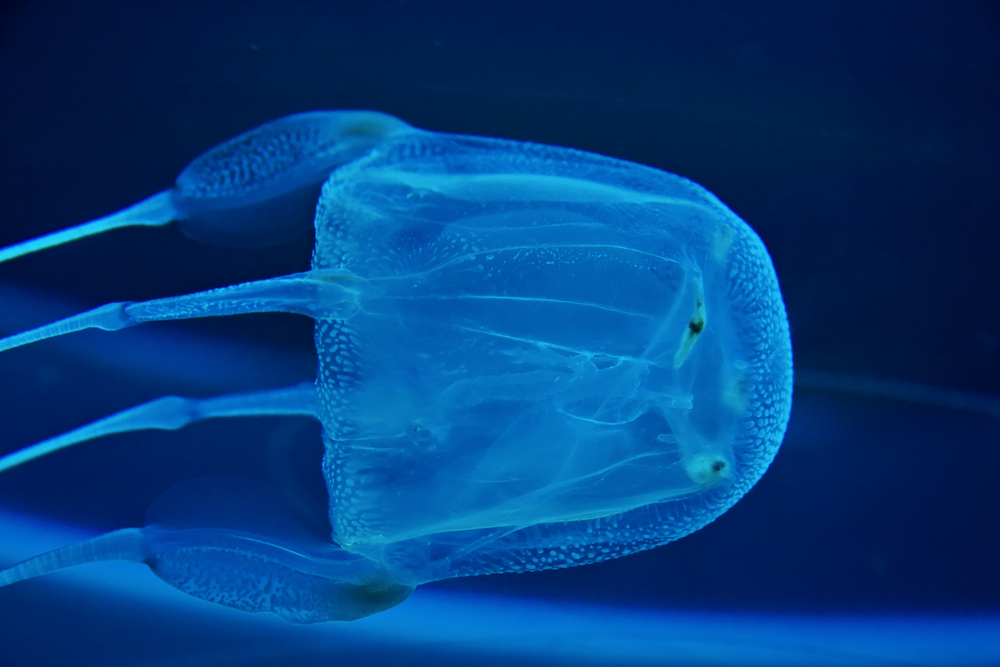
Floating through the ocean with an almost ethereal grace, the box jellyfish is as beautiful as it is lethal. Known for its nearly invisible tentacles that can stretch up to ten feet long, this jellyfish delivers one of the most venomous stings in the marine world. Found primarily in the waters around northern Australia and throughout the Indo-Pacific, the box jellyfish holds the grim title of one of the ocean’s deadliest creatures. According to National Geographic, the box jellyfish is one of the most venomous creatures on Earth, with tentacles that can deliver toxins capable of causing heart failure within minutes.
What makes them even more terrifying is their near transparency, making them hard to spot until it’s too late. Swimmers and snorkelers need to be especially cautious in jellyfish territory, as an encounter can quickly turn deadly without immediate medical intervention. Some fortunate victims have survived stings, thanks to rapid application of vinegar and antivenom. However, the box jellyfish remains a creature to be admired from a very safe distance. Floating on a boat or swimming in a protected area are wise choices when these jellyfish are in season.
4. Brazilian Wandering Spider
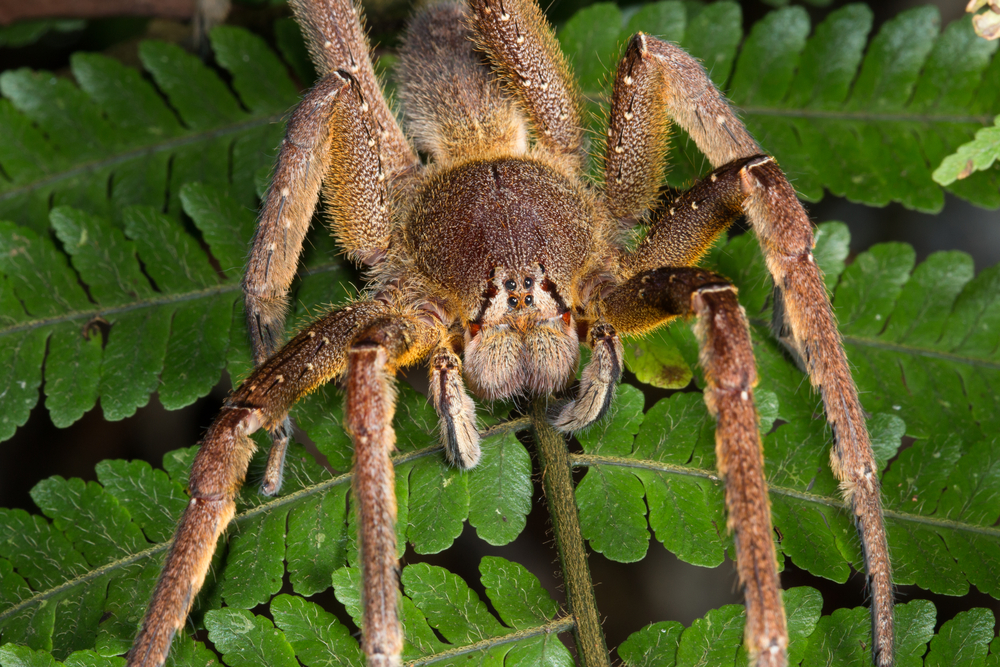
The Brazilian wandering spider is the arachnid that gives even the bravest spider enthusiasts pause. With a bite that injects potent neurotoxic venom, this spider is not one to trifle with. Found in tropical South America, particularly in Brazil, this spider gets its name from its habit of wandering the jungle floor at night rather than spinning webs. Its bite can lead to serious medical symptoms in humans, including intense pain, difficulty breathing, and, in extreme cases, paralysis or death. While fatalities are rare thanks to effective antivenom, the bite is still considered a medical emergency.
Notably aggressive when threatened, the Brazilian wandering spider will stand its ground, displaying its impressive leg span and raising its body to deliver a warning. This behavior is a clear sign to keep your distance, as the spider isn’t afraid to defend itself. Unlucky encounters with humans often occur when the spider finds its way into homes, shoes, or clothing. It’s a sobering reminder to always shake out your shoes and be mindful of the corners in your house if you’re living in its territory. While the spider serves an important ecological role, respect and a healthy distance are key to coexisting peacefully.
5. Komodo Dragon
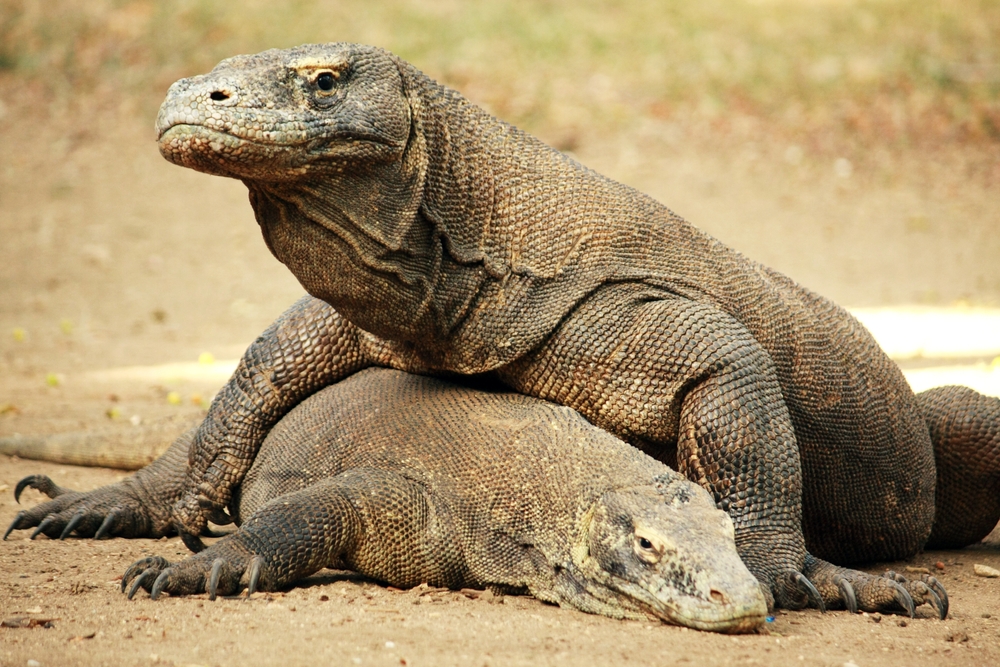
The Komodo dragon, a real-life dragon of the animal kingdom, is an apex predator with a bite to fear. These massive lizards, native to Indonesia’s Lesser Sunda Islands, possess a mouthful of serrated teeth and venom glands that make their bites especially harmful. Unlike poisonous creatures, whose toxins are harmful when ingested or touched, the Komodo dragon’s venom is delivered through a bite, resulting in lowered blood pressure, massive blood loss, and shock, leading to prey immobilization. With a bite force less powerful than crocodiles, it’s the bacteria and venom combination that makes Komodo dragons deadly.
These lizards are opportunistic feeders and can take down prey much larger than themselves, thanks to their formidable bite. Once a dragon sinks its teeth into its target, it tends to back off and let the venom do the work, following its prey until it collapses from exhaustion and shock. Solitary by nature, Komodo dragons can become fiercely competitive during feeding, showcasing their dominance through a variety of physical displays. While attacks on humans are rare, they do happen, especially if the dragon feels threatened or if an unaware traveler wanders into their territory. For those adventurous enough to visit their habitats, a guided tour with a trained ranger is the safest bet.
6. Blue-Ringed Octopus
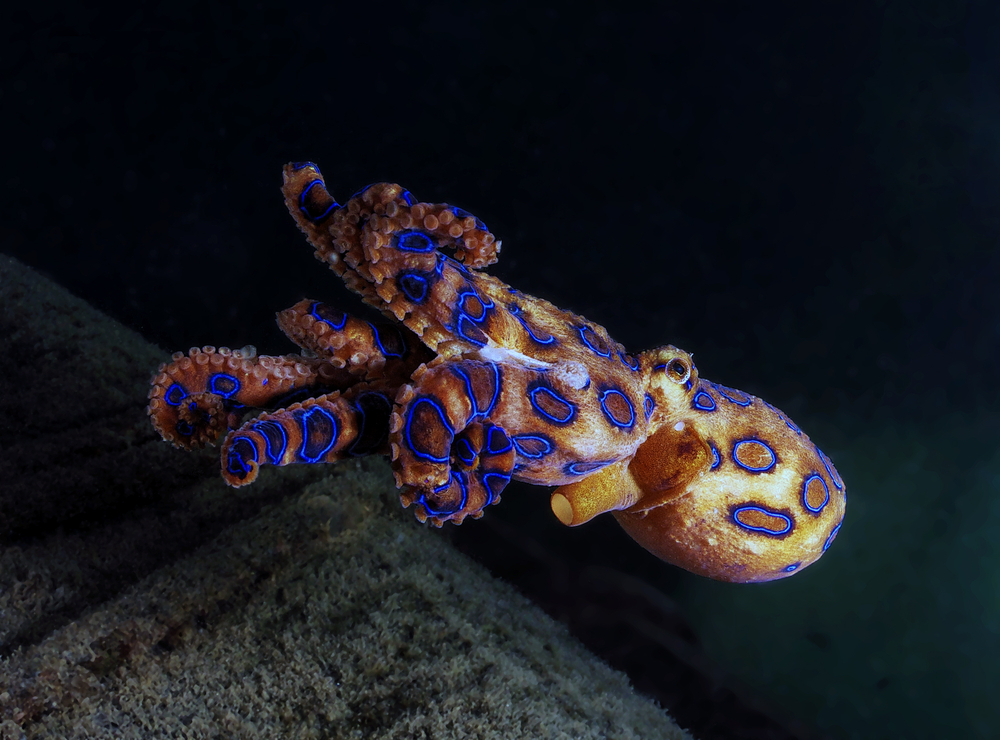
With its mesmerizing blue rings and petite size, the blue-ringed octopus might seem like an enchanting marine companion at first glance. However, this small cephalopod packs a powerful punch with venom potent enough to kill twenty-six adult humans within minutes. Found in the tide pools and coral reefs of the Pacific and Indian Oceans, the blue-ringed octopus is a master of camouflage, often going unnoticed until provoked. When threatened, its normally muted skin transforms, showing vivid blue rings as a warning sign.
Despite its deadly potential, the octopus is not inherently aggressive; it prefers to hide and will only bite in self-defense if handled or disturbed. The toxin, called tetrodotoxin, can cause paralysis, respiratory failure, and death in a very short period if not treated promptly. There is no known antivenom, so first aid is crucial, focusing on artificial respiration until professional medical help can be obtained. While snorkeling or diving in regions known to host these octopuses, it’s wise to admire their beauty from a distance and resist the temptation to touch. A close-up encounter might be the last thing you experience.
7. Cassowary
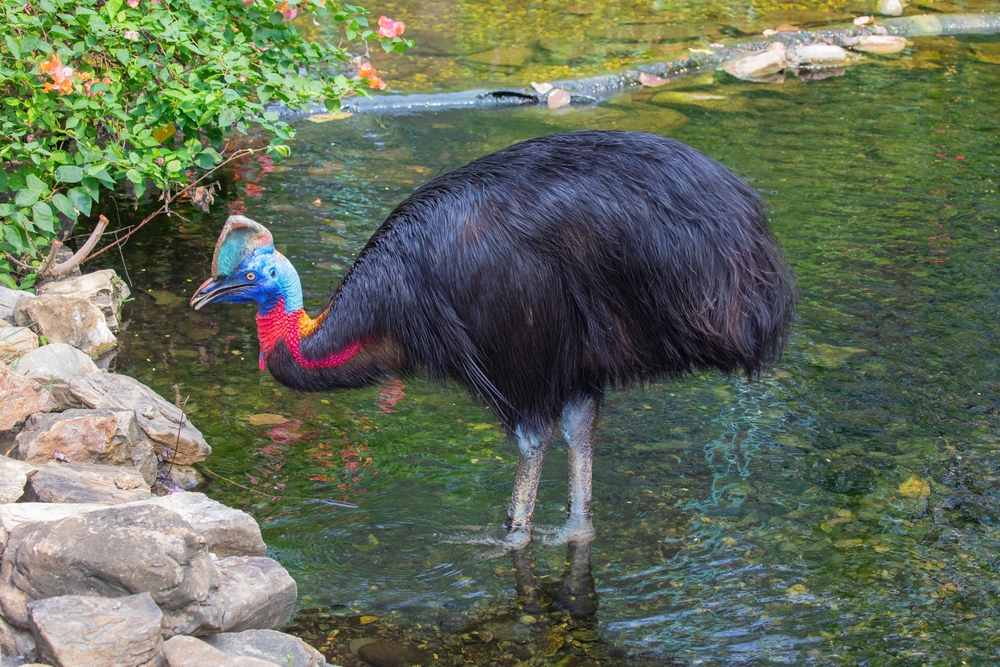
The cassowary, often dubbed the world’s most dangerous bird, is a flightless giant with a reputation not to be trifled with. Found in the rainforests of northern Australia, Papua New Guinea, and surrounding islands, this bird is as striking as it is intimidating. It boasts a vivid blue face and neck, topped with a helmet-like casque, and a pair of powerful legs equipped with dagger-like claws. While they are generally shy and reclusive, cassowaries can become fiercely aggressive if threatened, particularly when defending their young or territory.
Though they’re not venomous, their lethal potential lies in their ability to deliver swift, powerful kicks capable of causing serious injury or even death. The inner claw on each foot can grow up to 5 inches long, and with a strong swipe, it can disembowel a predator or human. Avoiding confrontation is the best course of action if you happen to come across a cassowary in the wild. If you find yourself too close for comfort, back away slowly and avoid sudden movements. Feeding them is a definite no-no, as it encourages them to associate humans with food, potentially leading to dangerous encounters.
8. Cone Snail
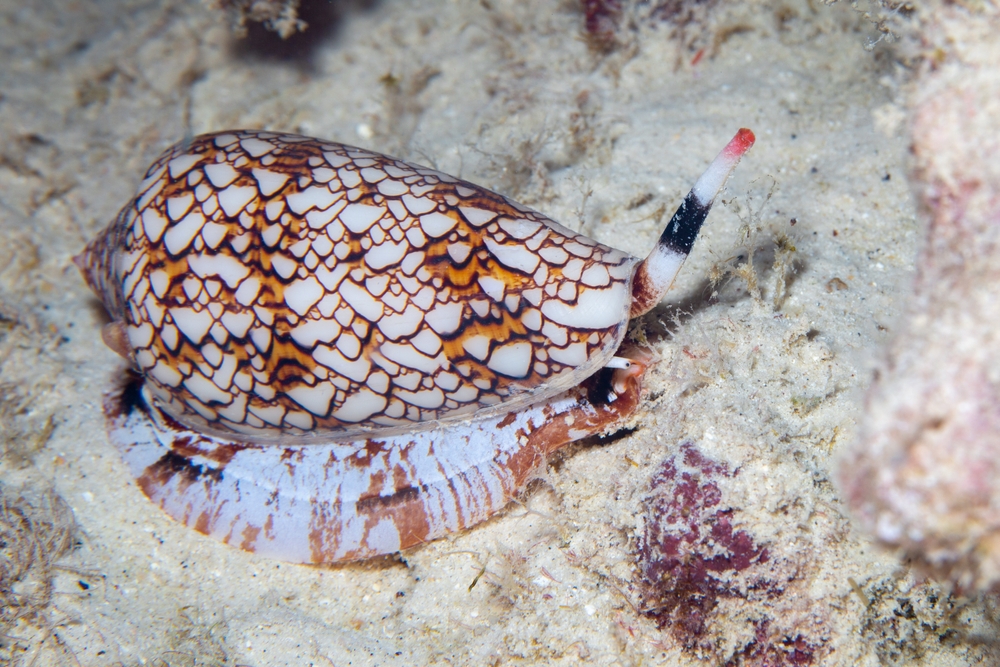
If you think snails are slow and harmless, the cone snail will prove you quite wrong. Found mainly in warm and tropical seas and oceans, these mollusks carry a venomous sting that can cause paralysis and, in severe cases, death. What makes cone snails particularly unsettling is their method of hunting and defense: a harpoon-like tooth that can be fired to inject venom into prey or potential threats. The venom is a complex cocktail of toxins known as conotoxins, which can cause a range of symptoms, from pain and swelling to respiratory failure.
While fatalities from cone snail stings are rare, they are possible, especially if medical treatment is not immediately available. The smaller species tend to hunt marine worms, while the larger ones go after fish, using their venom to immobilize their prey quickly. The beauty of their intricately patterned shells often attracts collectors and beachgoers, who may inadvertently put themselves at risk by handling these snails. If you spot a cone snail while exploring tide pools or snorkeling, admire their stunning shells from a safe distance. Picking one up is akin to playing a risky game of chance that’s better left unplayed.
9. Inland Taipan
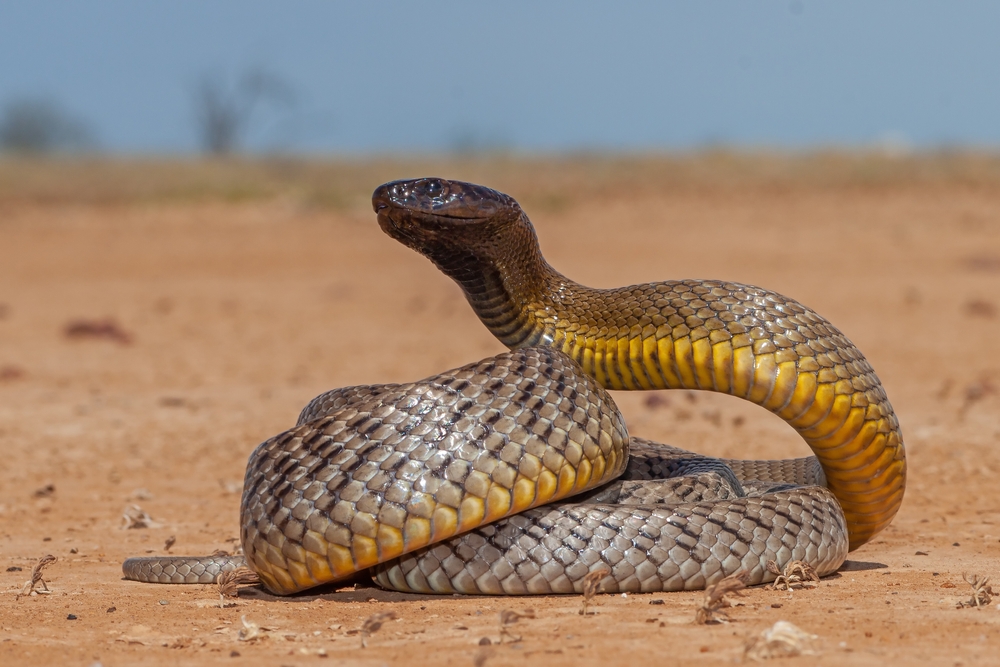
Dubbed the “fierce snake,” the inland taipan holds the title of the most venomous snake in the world. Found in the arid regions of central Australia, this elusive serpent is rarely encountered in the wild, which is lucky for both the snake and any potential humans crossing its path. Its venom is so potent that a single bite could kill 100 adult humans, though no fatalities have been recorded due to their reclusive nature and the availability of antivenom. The inland taipan is a master of adaptation, changing its coloration seasonally, which helps in regulating its body temperature and maintaining camouflage in its environment.
When it comes to defense, the inland taipan is surprisingly docile, often preferring to flee rather than fight. However, if cornered, it will strike with precision, injecting a cocktail of neurotoxins, hemotoxins, and myotoxins that can cause paralysis, bleeding, and tissue damage. Snake enthusiasts and researchers who venture into taipan territory take extensive precautions to avoid bites, as even with antivenom available, the effects can be life-threatening. For casual hikers and tourists, it’s best to admire these snakes from the safe confines of a reptile house or a nature documentary on television.
10. Stonefish
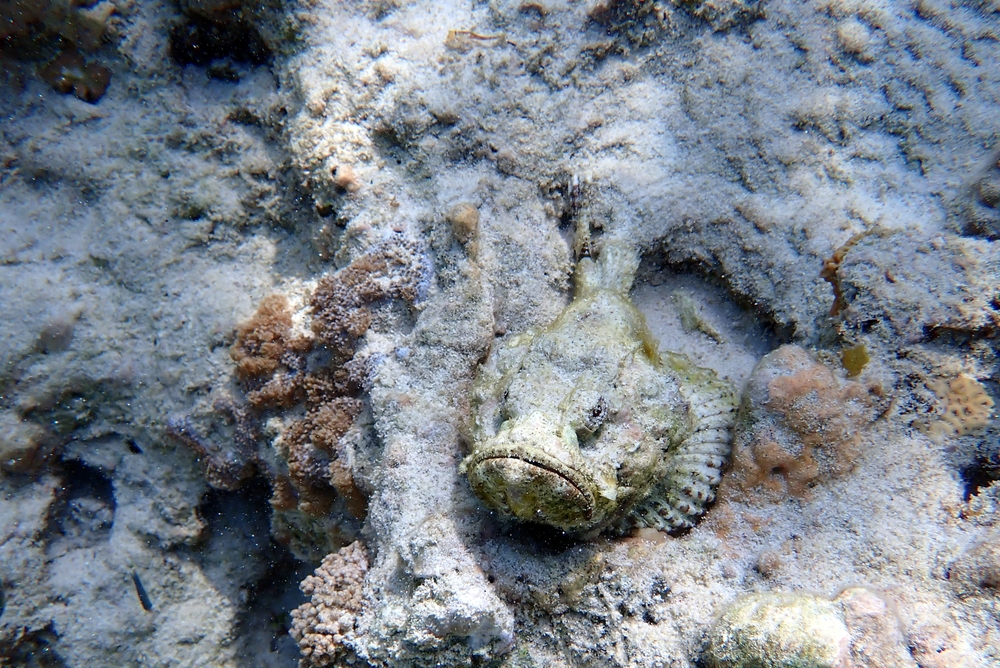
The stonefish, often considered the most venomous fish in the ocean, is a master of disguise and danger. Resembling a rock or piece of coral, this fish is perfectly camouflaged on the ocean floor, making it a hazard for unsuspecting swimmers and snorkelers. Native to the coastal regions of the Indo-Pacific, the stonefish possesses dorsal spines capable of delivering venom that can cause excruciating pain, paralysis, and potentially death. The venom is used as a defense mechanism rather than for hunting, as their primary prey is ambushed with their quick reflexes.
Stepping on a stonefish can result in a painful encounter, as the fish injects venom through its needle-sharp spines. Immediate first aid and medical attention are crucial, as the pain can escalate quickly, and in severe cases, the venom can lead to heart failure. The best way to avoid an unfortunate stonefish sting is to be mindful when walking on rocky or sandy ocean floors and to wear protective footwear if you’re exploring tide pools or shallow waters. Divers and snorkelers are advised to keep an eye out for these masters of mimicry, appreciating their unique appearance from a safe distance.
11. Hyena
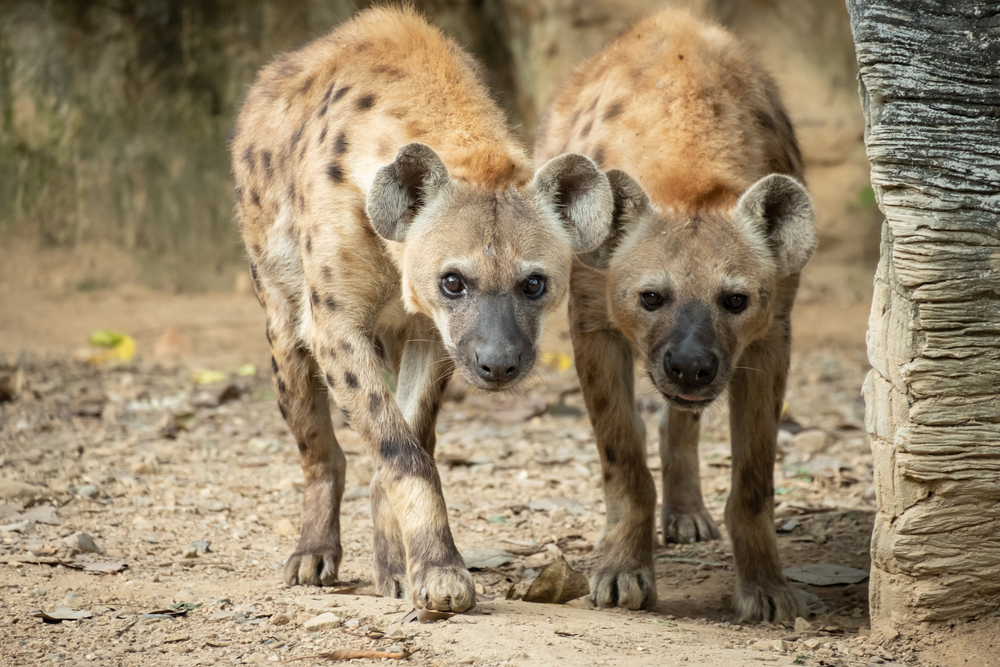
Often misunderstood and typecast as the villain in the animal kingdom, hyenas are social predators with a formidable bite. With jaws that can exert a force of around 1,100 pounds per square inch, hyenas are well-equipped to take down prey and crush bones. Found throughout much of Africa, these scavengers are also skilled hunters, capable of taking on large herbivores like wildebeest and antelope. Their powerful bite allows them to consume nearly every part of their prey, including bones, which they digest with ease thanks to highly acidic stomachs.
Living in structured social groups known as clans, hyenas are cooperative animals, using intricate communication methods ranging from vocalizations to body language. While they may seem aggressive, hyenas are often wary of humans and will typically avoid direct confrontations. However, in areas where humans encroach on their territory, interactions can occur, particularly if hyenas are attracted to livestock or refuse. For those on safari or exploring hyena habitats, it’s important to observe these animals from a vehicle or designated safe area, respecting their space and role in the ecosystem.
12. Piranha
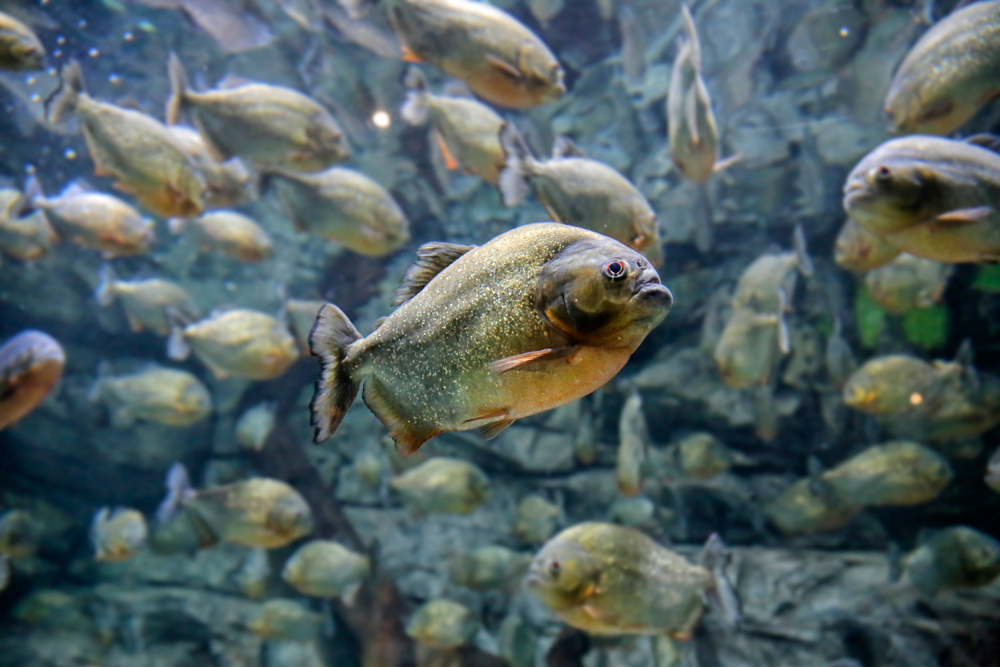
The piranha, with its razor-sharp teeth and reputation for frenzied feeding, is a fish that inspires both fear and fascination. Inhabiting the rivers and lakes of South America, piranhas are often depicted as ferocious carnivores, capable of stripping flesh from bone in seconds. While this reputation is somewhat exaggerated, certain species of piranha do possess a powerful bite, used to tear into prey or defend themselves from threats. Their triangular teeth are perfectly suited for slicing through meat, and they can replace lost teeth as needed throughout their lives.
Piranhas are opportunistic feeders, with many species primarily consuming fish, insects, and plant matter. While attacks on humans are rare, they can occur in certain circumstances, such as during periods of food scarcity or if the fish feel threatened. In these cases, the bites can be painful and damaging, though they are rarely life-threatening. Swimmers and fishermen should take care when entering piranha-infested waters, especially near known feeding zones or during dry seasons when food is scarce. By respecting their habitat and understanding their behavior, humans and piranhas can coexist without incident.
13. African Lion
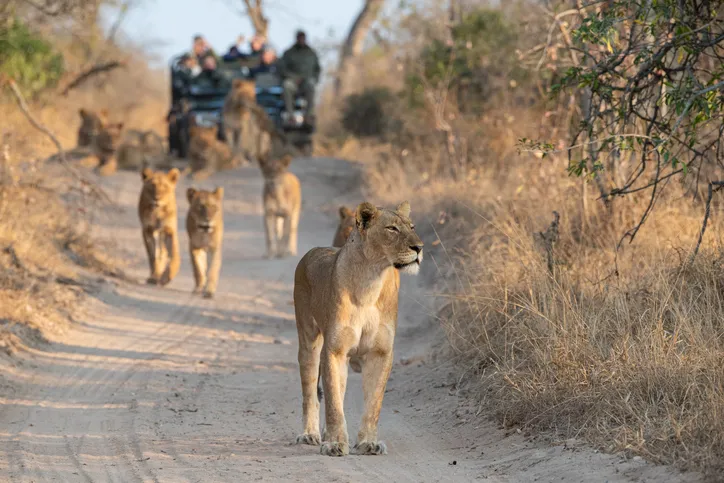
The African lion, often called the “king of the jungle,” boasts a bite that reinforces its position at the top of the food chain. With a bite force estimated at 650 pounds per square inch, lions are able to subdue large prey, from zebras to buffalo, with relative ease. Found primarily in the savannas of sub-Saharan Africa, lions are social creatures that live in prides, hunting cooperatively and sharing their kills. Their powerful jaws and sharp teeth are adapted for gripping and suffocating prey, an essential skill for their survival in the wild.
While lions are magnificent to observe, they are not to be underestimated. Human-lion conflicts can arise when people encroach on lion territories, either through agriculture or settlement expansion. In such cases, lions may prey on livestock, leading to retaliatory actions by humans. For those venturing into lion country, whether on safari or as researchers, it is crucial to maintain a safe distance and adhere to guidelines provided by wildlife professionals. Witnessing lions in their natural habitat offers an incredible insight into their strength and social structure, but respect and caution are paramount.
14. Leopard Seal

With its sleek build and powerful jaws, the leopard seal is a formidable predator of the Antarctic waters. Known for its distinctive spotted coat and aggressive hunting tactics, the leopard seal preys on a variety of species, including penguins and fish. Its bite is both strong and precise, with specialized teeth designed to sieve krill from the water or tear apart larger prey. Found in the icy realms of the Southern Ocean, leopard seals are feared by their prey and respected by those who study them.
While they are not typically aggressive towards humans, encounters with leopard seals can be dangerous, particularly for divers and researchers working in their habitats. These seals have been known to exhibit curiosity and playfulness, but their size and strength mean that any interaction can turn perilous if the seal feels threatened or cornered. For those studying or photographing these magnificent creatures, maintaining a respectful distance and allowing the seal to dictate the terms of any interaction is key. Leopard seals are a testament to the power and adaptability of marine predators, and observing them from a safe vantage point allows for an appreciation of their role in the ocean ecosystem.
15. Tasmanian Devil
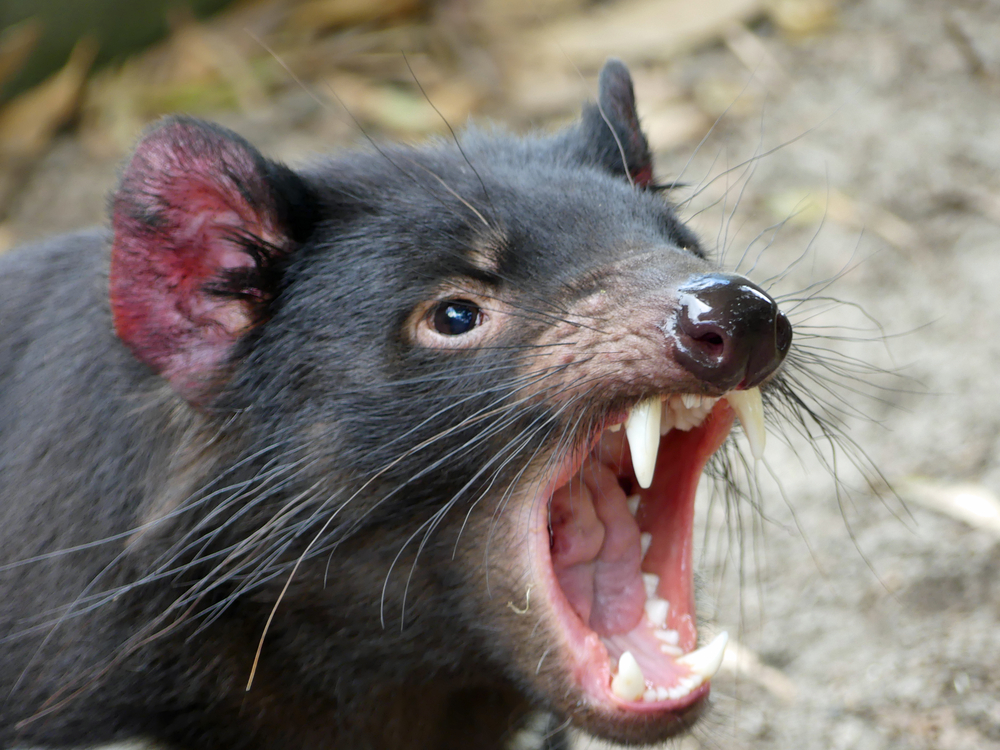
Last but not least, the Tasmanian devil, with its fiery temperament and powerful bite, rounds out our list of formidable biters. Native to the island state of Tasmania, this carnivorous marsupial possesses the strongest bite relative to body size of any living mammal. Equipped with robust jaws and teeth capable of crushing bones, Tasmanian devils are both scavengers and hunters, able to consume the entirety of their prey, including fur and bones. Their ferocious feeding behavior and eerie vocalizations have earned them a fearsome reputation, though they pose little threat to humans.
These nocturnal creatures are solitary in nature, coming together mainly to feed or mate. Unfortunately, Tasmanian devils face significant threats due to habitat loss and a devastating disease known as Devil Facial Tumor Disease, which has drastically reduced their population. Conservation efforts are underway to protect these unique animals and ensure their survival for future generations. If you’re fortunate enough to observe a Tasmanian devil in the wild or at a sanctuary, you’ll gain a greater appreciation for their resilience and adaptability. Just remember, like all wild animals, they deserve respect and space to thrive in their natural habitat.
